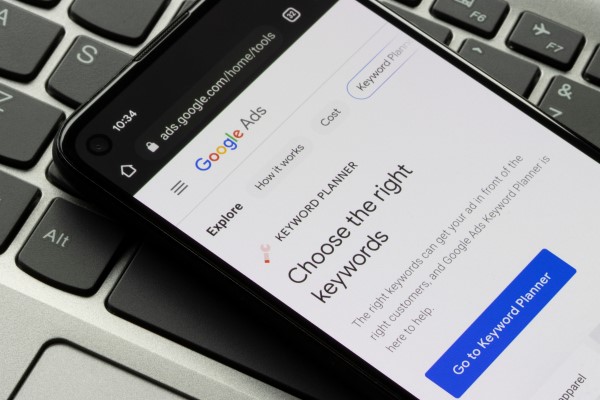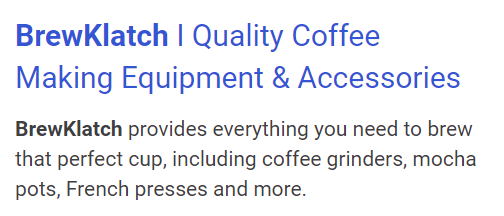Blog | A useful guide to keywords and keyword research
We all know words matter. Especially the ones your customers type into search engines dozens of times per day to find the content, products and services they’re looking for. These words and phrases are also known as keywords.
Keywords are critically important for informing search engines, like Google and Bing, about your website’s content.
When your on-page content contains the keywords that someone is searching for, your website will be seen as more relevant by the search engines (like Google) and ranked higher on search results pages. This is part of a wider set of practices known as Search Engine Optimisation, or SEO.
However, if someone is searching for, “vintage turntable repair” for example, and your content doesn’t contain any of those words, your website won’t be considered relevant by Google and won’t appear in the top search results.
Why are keywords so important to factor into your website?
In addition to helping search engines understand what your content is about, keywords also help you come to grips with what your customers might be looking for. Keyword research can even help reveal the pieces of content you should be creating to better meet your customers’ needs.
Content that contains keywords (keyword optimised) will help ensure that you’re attracting the right audience to your website and boost traffic. You also increase the likelihood that users that have found your website via a self-directed, organic search, are going to stay longer and make a transaction.

The first step to keyword creation? Start with research. Here’s how:
Of course, to create keywords (and keyword optimised content) you need to first know what keywords you’re targeting and why. This is where the critical first step of keyword research takes place. Here, you will attempt to uncover the specific words or search queries you need to target as well as how popular or common they are in relation to your business, products and services.
Step 1: Start by coming up with five to six high-level topics that you think are important to your business. Put yourself in your customers’ shoes and consider why they’d be searching for your products or services. For example, if your business sells specialised coffee making equipment, you might want to consider topics like, “coffee grinders,” “espresso machines,” “coffee accessories,” “coffee makers” etc.
Step 2: Expand further on those generic topics by incorporating search phrases your customers might use. If we dive further into the “coffee grinders” topic, we might say, “high end coffee grinders,” “best espresso grinder” etc.

Keyword research tools, like Google Keyword Planner, Wordtracker and Moz Keyword explorer are extremely useful for helping you think up alternate words and phrases. Need even more keyword or keyphrase ideas? Pay special attention to related searches that appear at the bottom of a Google search results page.
Step 3: Keep your audience’s intent front-of-mind. Again, step into your customers’ shoes and consider the “why” behind their searches. What particular issues might they be trying to solve? Are they new coffee enthusiasts looking to find high-quality, affordable grinding and brewing equipment or accessories? Or perhaps, they are seeking out a thoughtful gift for the coffee connoisseur in their life?
- If you want to understand your customers on a deeper level, check out our e-book: How personas lend a human touch to your website.

A quick guide to keyword optimisation on your website
Now that you have some potential keywords and key-phrases in hand, what do you do with them? Let’s focus on the areas of your website where keyword optimisation will have the most impact.
Look first at your page titles, meta descriptions, image titles and alt text, page headings and main content. Yes, writing (or re-writing) these areas with your new keywords in mind can be a bit of work upfront, but will set you up for success over the longer term.
Webpage titles are used in search results pages to describe a webpage’s content. They’re the first thing you see in a search results page. Titles often have a major impact on a visitor’s decision to click through to your site – or not. Here are three things you can do:
- Keep your titles below 70 characters so they don’t appear cut off.
- Include keywords or key phrases early so they’re more obvious to users.
- A (fictional) example might be: BrewKlatch I Quality Coffee Making Equipment & Accessories
Meta descriptions are shown in search results pages right below the title and can also help sway a user’s decision to click through. Keep these short, snappy and enticing while incorporating keywords or phrases.
- For example: “BrewKlatch provides everything you need to brew that perfect cup, including coffee grinders, mocha pots, French presses and more.”

Page headings and content: When adding keywords into your headings and content (or reworking your existing content with your new keywords in mind), make sure that you’re doing it naturally and with good writing practices (as well as readability) in mind.
Remember: Google actively penalises you in its search rankings for simply “keyword-stuffing” or saturating your content with nonsensical-sounding key phrases. Not to mention, this makes for a poor user experience and will only serve to frustrate and confuse your audience.
The practice of “keyword mapping” can be a big help when tackling headlines and longer-form content. This involves taking your list of keywords and then matching them to specific pages.

For example, if one of your phrases is, “best coffee grinder” you might map it to a blog post about the “best coffee grinders under €100.” Then you’d take your keywords like, “burr grinder,” “blade grinder” and “hand grinder” and work them into your main blog content.
Alt-tags and images: If your website contains any imagery – like photos of products, for example, be sure to add short, keyword-rich descriptions known as alt-tags. In addition to having a positive impact on SEO, alt-tagging your imagery is an important step in making your website far more accessible to people with visual impairment.
As a quick example: If you have an image of an espresso machine for your high-end coffee gear website, your alt text might say, “Stainless steel 4-cup stovetop espresso maker.”
When (and where) will you see results?
If you’ve done your keyword research and optimisation well, you should start to see results (typically in the form of increased, relevant traffic to your site) in about six to 12 months’ time.
While that does seem like a long wait, the reality of keyword optimisation and SEO in general is that positive results take time to achieve.
Why? Search engines are always trying to serve up the most relevant result for each search query. Even if your page is a sparkling example of keywords being put to good use, it will still take time for your page to earn a higher search results ranking.

Plus – even if you do eventually reach the peak of the search result rankings, there will likely be plenty of competition looking to supplant you with their own keyword-optimised content. Think of keyword optimisation as something that’s going to require regular care and maintenance from you in order to succeed.
Further reading
For a more in-depth guide to performing SEO optimisation across your entire website, download and read our e-book.
For lots of advice on developing your web presence for your business, take a look at our insights and resources for growing your small business.
Oonagh McCutcheon is our Chief Communications Officer and National Director of our .IE Digital Town Programme.